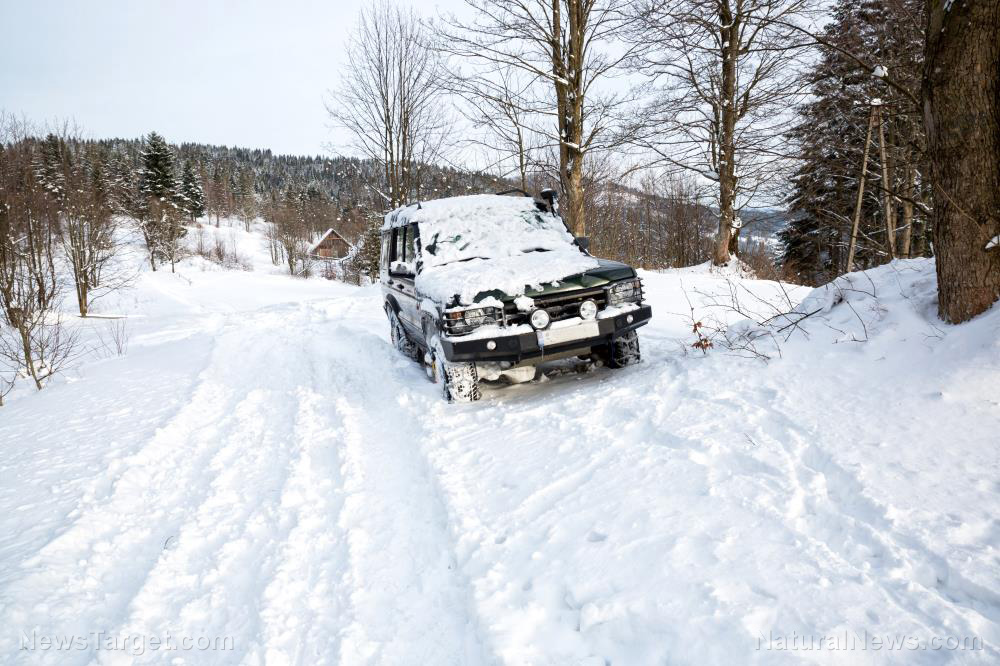Surviving a massive power outage
08/24/2021 / By Mary Villareal

The U.S. power grid is a fragile and nearly obsolete thing in terms of technology upgrades. While many believe there is nothing to worry about, it does not take that much effort to bring the whole thing crashing down. It could be due to natural disasters or a man-made threat such as a cyber-attack, or a simple overloading of the system caused by an increase in population and urbanization.
The power grid could be taken down in seconds, but the bigger problem is that a massive power outage could take weeks or months to restore. Affected regions could be plunged into chaos; however, the first order of business is to check how widespread the outage is.
Remember not to panic, and check to see if the problem is not local: it could be a matter of having your main circuit tripped. Take a look out the window and check the streetlights: if they are off, it usually indicates a larger power outage.
Preparations for when the power grid goes down
Before a major power outage could go, it is important to prepare your household for long periods without electricity. (Related: The prepper’s guide to surviving a power outage.)
Water
Water is essential no matter what crisis scenario you’re going to find yourself in. Make sure that you have a large supply of water, about one to one and a half-gallon of water per household member per day.
You don’t have to start buying cases of water, but try to collect as much water as possible by filling the bathtubs and sinks in your home. Fill them with as much water as possible before the tap runs dry.
Light and electricity
More and more households have invested in a small generator to provide them with electricity for their lights, phone, radios or laptop — basically charging stations for essential devices. However, advancements in solar power also made solar power kits incredibly effective and accessible: they can power most of the house, and you don’t have to break the bank to get one.
Food
A lot of food goes to waste during long blackouts. Try to make the most out of your fridge by storing a few plastic bottles of water in the freezer to keep food cooler for longer. The food stays cold in the fridge for four hours if the door isn’t opened, and a full freezer can last 48 hours.
Prepare a hot meal with food that may spoil quickly. Check the temperature of your fridge and freezer, and cook anything that might spoil. You can eat this later or the following day. Try not to throw away any of the food; instead, use your frozen peas and other packaged items to lower the temperature.
Keeping safe in the dark
When the power grid goes down, it is important to note that you may have to face dangerous scenarios: after all, the crime rate goes up significantly in darker neighborhoods.
To avoid getting robbed in your house, start by not advertising what you have. For instance, just because you prepared for a blackout, it does not mean you can light up your home like it’s Christmas. Instead, try using flashlights or lamps at night, and block your windows by using heavy blankets and curtains to prevent light from escaping.
Fighting weather conditions
Without electricity, the outside temperature will play an important role in your comfort level.
If the weather is hot, try to stay cool by staying in the basement, or an interior room that is away from outside walls. Use a ventilator to move the air around. Light and airy clothing can help you keep cool, and remember to stay hydrated.
If it’s cold outside, layer up and wear clothes that are appropriate for the weather. Close the blinds and gather in a small room where the sun will hit the most. Use blankets and cardboard to insulate the walls and trap heat inside as well.
Preparing for a power outage is important, but you also have to remember to be smart about your choices. Do not put yourself or your family at risk by flaunting what you have that others don’t.
Read more prepper tips at Preparedness.news.
Sources include:
Tagged Under: blackout, electricity, food safety, light sources, power grid, Power Outage, preparedness, prepper, survival, temperature, tips, water storage, weather
RECENT NEWS & ARTICLES
PowerGrid.News is a fact-based public education website published by Power Grid News Features, LLC.
All content copyright © 2018 by Power Grid News Features, LLC.
Contact Us with Tips or Corrections
All trademarks, registered trademarks and servicemarks mentioned on this site are the property of their respective owners.



















